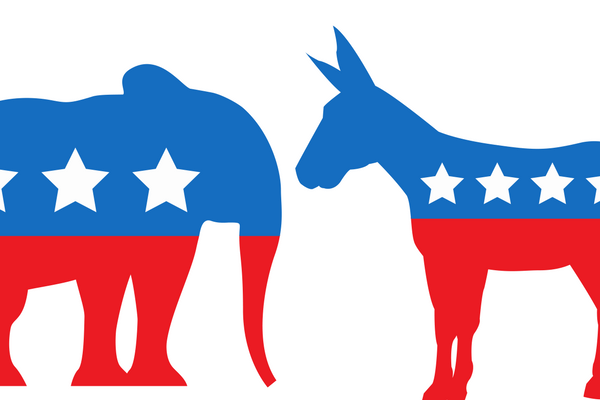Ballotpedia recently published a study on state supreme courts entitled “Ballotpedia Courts: State Partisanship”. Among the findings, the study showed that there has been an increase in partisanship on the state courts over the past ten years and that there is a correlation between the partisanship of justices selected for state supreme courts and the results of the presidential election. In other words, the national popularity of a political party seems to correspond with the partisanship of justices selected to the state courts, and the partisan trend in state supreme court selection seems to be predictive of the presidential election.
State supreme court selection predicts presidential election:
Seven states hold partisan elections for state supreme court justices, but almost all justices on the state courts have some degree of partisan involvement. Our study tracks various data points indicating each justice’s partisan political involvement leading up to his or her selection to the state’s court of last resort.
Our data shows that in the first four years of George W. Bush’s (R) presidency, the average partisan Confidence Score (our level of confidence in a justice’s partisan affiliation) of justices across the United States was 1.2, a Republican-leaning average. In the last four years of Bush’s presidency, the average score was a -0.6, a Democratic-leaning average.
Following that period, Barack Obama (D) was elected president. In the last four years of Obama’s presidency, the average court balance score was 1.8, a Republican average. Following that period Donald Trump (R) was elected president.
Although there was an increase in justices with Democratic scores following Barack Obama’s election, it was followed by an even greater increase in Republican scores leading up to Donald Trump’s election and throughout his presidential term.
Confidence in partisanship of justices has increased in recent years
As of June 2020, there were 185 justices on the state supreme courts who ascended to the bench between the years of 2000 and 2015. Of those justices, 88 (47.6%) recorded Republican Confidence Scores, 70 (37.8%) recorded Democratic Confidence Scores, and 27 (14.6%) recorded Indeterminate Confidence Scores. On the other hand, there were 128 justices on the state supreme courts who ascended to the bench between the years of 2016 and 2019. Of those justices, 78 (61%) recorded Republican Confidence Scores, 33 (25.8%) recorded Democratic Confidence Scores, and 17 (13.2%) recorded Indeterminate Confidence Scores.
Although there was an increase in the appointment of Democratic-affiliated justices during Obama’s presidency, that was short-lived and was followed by an even greater number of Republican-affiliated state supreme court justices ascending to the bench. In 2015, the average partisanship score of state supreme court justice’s selected was -0.6, a Democratic average. In 2016, the average partisanship score of state supreme court justices selected was 4.1, a Republican average, the highest of all years for which we have data. In 2017 the average partisanship score was 3.7, a Republican average, and the second highest of all years for which we have data.
Additional reading:


